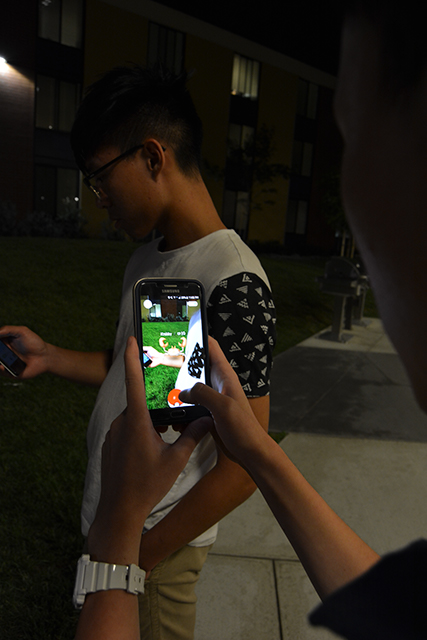Nostalgia for a much-beloved 1990s Japanese franchise materialized into excitement as millions downloaded a location-based, virtual phone game called Pokémon Go. The game broke App Store download records as players roamed local surroundings, exploring for cute virtual monsters. Catching Pikachu and Pidgey may seem like an innocuous task, but the Pokémon Go phenomenon also revealed the incognizant and often dark way millennials interact with consumer technology in an increasingly globalized society.
Pursuit of amassing virtual characters.
Pokémon Go captured my attention when my coworkers started playing it during their break and when videos of herds of Pokémon hunters strolling through Central Park surfaced on my Facebook newsfeed. After two days of playing the game, I was awed by how technology has brought people together in the common pursuit of amassing virtual characters. The game was fun and required a surprising amount of walking, but I was more interested in the game from a sociological perspective.
Thomas Dworzak, a Magnum photographer, revealed the eerie aspects of human behavior and “dark tourism” in his recent pictorial news story of Pokémon Go players in Paris. Dworzak likened the herds of players to figurines in a play and described how poké stops were located at historically sensitive places such as a “concentration camp and memorial” where a sign requested users not to play the game near “the monument commemorating the deportation of people in World War II.”
“I don’t really know what to make of it. I want to leave it open because I want to know what people will think about it,” Dworzak described in his latest photography project. Dworzak and several others revealed how game users can be simultaneously aware of their geographical surroundings and unaware of the sometimes tragic historical context behind particular landmarks and locations.
Privacy issues and vulnrabilities
An article published by The Intercept also revealed how millions of Pokémon Go players were unaware of the game’s privacy vulnerabilities and the shady history behind the game’s creator. The article included a letter by the Electronic Privacy Information Center — a privacy watchdog group who showed how the app “was almost certainly in violation of the Federal Trade Commission’s (‘FTC’) earlier consumer privacy decisions and posed an enormous security risk to millions of users who downloaded the app.”
The letter pointed to instances where Niantic Inc. — the developer of the aforementioned game — did not ask the user’s permission to allow “the company to view user’ contacts; view and send email; view and delete Google Drive documents; access search and map navigation history; and view private photos stored in Google Photos.”
John Hanke, the founder of Niantic, is well known for running Keyhole — a CIA-funded company that was acquired by Google in 2004 and was responsible for accumulating the geographical imagery required to create Google Earth. Hanke was caught in a large privacy scandal several years ago when Google vehicles were caught illegally accumulating people’s Wi-Fi data in Germany.
It seems as if the game’s creator has a scandalous history, but this does not mean players should stop playing the game. Technology can provide users with endless entertainment, but we millennials must examine the way we interact with technology and how it alters our perception of the past, present and future.







